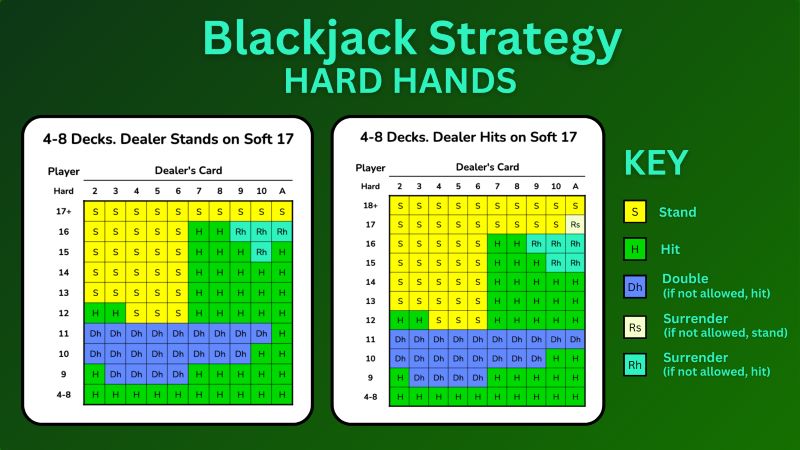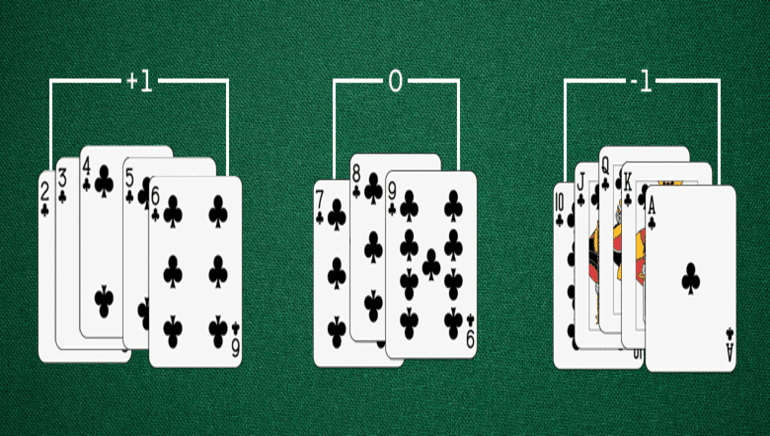Il blackjack è uno dei giochi di carte più popolari nei casinò, attraendo sia i principianti che i giocatori esperti grazie al suo mix di fortuna e strategia. Molti pensano che si tratti solo di fortuna con le carte, ma esistono semplici strategie che chiunque può utilizzare per migliorare le proprie probabilità di vincita fin dall’inizio.Imparare le regole di base e le tattiche collaudate è il modo più rapido per i principianti di iniziare a giocare a blackjack come dei professionisti.
Questa guida copre tutti gli aspetti essenziali, dalla comprensione del funzionamento del gioco alle decisioni intelligenti al tavolo. I lettori troveranno consigli pratici che potranno utilizzare immediatamente, sia che giochino a casa o in un vero casinò. Ogni sezione è progettata per spiegare il processo in modo chiaro, in modo che chiunque possa iniziare a giocare con maggiore sicurezza.
Regole del Blackjack e strategie essenziali

Il blackjack è un popolare gioco di carte in cui i giocatori mirano a costruire una mano il più vicino possibile a 21 senza superarlo. Conoscere le regole, le decisioni e le strategie è essenziale per un gioco efficace.
Gameplay di base e valori delle carte
A ogni giocatore al tavolo vengono distribuite due carte, solitamente scoperte, mentre il mazziere ne riceve una scoperta e una coperta. L’obiettivo è battere il totale del mazziere senza superare 21.
I valori delle carte sono semplici:
- Carte numeriche (2-10): valore nominale
- Carte con figure (Jack, Regina, Re): 10
- Assi: 1 o 11, a seconda di quale aiuta di più la mano
Una mano di “Blackjack” è composta da un asso e una qualsiasi carta da 10 punti, per un totale di 21. Le puntate vengono piazzate prima della distribuzione delle carte. Le vincite per un blackjack naturale sono in genere 3:2, mentre le vincite standard pagano 1:1. Se sia il giocatore che il banco hanno lo stesso totale, si verifica un “pareggio” e il giocatore mantiene la sua puntata.
Capire l’etichetta a tavola
Un corretto galateo al tavolo contribuisce a un gioco più fluido e a mantenere buoni rapporti con il dealer e gli altri giocatori. I giocatori devono attendere la chiusura delle puntate prima di maneggiare carte o fiches. Azioni come chiedere carta, stare o raddoppiare vengono comunicate tramite segnali manuali, il che aiuta i dealer a evitare confusione.
Gli oggetti personali devono essere tenuti lontani dalla superficie del tavolo. I telefoni cellulari sono generalmente vietati al tavolo. I giocatori dovrebbero evitare di dare consigli agli altri a meno che non vengano richiesti e di incolpare il dealer per le perdite. Quando si entra o si esce, attendere la fine della mano in corso per ridurre al minimo le interruzioni.
Lasciare la mancia al croupier è consuetudine, soprattutto dopo una vincita o una lunga sessione di gioco, ma non è obbligatorio. Un comportamento educato è sempre richiesto.
Decisioni chiave: chiedere carta, stare, dividere e raddoppiare
Le decisioni più importanti durante una partita includono la scelta di “chiedere carta”, “stare”, “dividere” o “raddoppiare”.
Colpo:
Richiedere un’altra carta per migliorare la mano. Da usare quando il totale attuale è basso.
In piedi:
Rifiuta le carte extra e salda il conto con il totale attuale. In genere, si fa quando il totale è sicuro (intorno a 17+).
Diviso:
Se le due carte iniziali hanno lo stesso valore, il giocatore può dividerle in due mani effettuando una puntata aggiuntiva.
Esempio:Dividere una coppia di 8 in due mani separate.
Raddoppia:
Raddoppia la puntata originale e ricevi solo una carta in più. Questa strategia è più efficace quando il totale della mano è 9, 10 o 11.
La scelta corretta di queste azioni dipende dalle carte del giocatore e dalla carta mostrata dal dealer.
Utilizzo di grafici strategici di base
Le tabelle di strategia di base guidano i giocatori sulle mosse ottimali per ogni possibile combinazione di carte del giocatore e del banco. Queste tabelle sono create utilizzando probabilità e statistiche per ridurre il vantaggio del banco.
I grafici sono spesso disposti a griglia. La mano del giocatore scorre lungo il lato sinistro e la carta scoperta del mazziere in alto.
Un grafico tipico mostrerà la decisione migliore:colpo,in piedi,raddoppiare, O diviso—per ogni situazione.
Si consiglia di tenere a portata di mano una scheda di strategia di base, soprattutto per i principianti. Memorizzare gli scenari più comuni, come quando dividere gli assi o raddoppiare con un 11, aiuta ad aumentare la sicurezza. I casinò permettono ai giocatori di consultare le schede di strategia al tavolo. L’uso costante di una tabella di strategia di base è uno dei modi più affidabili per massimizzare i potenziali profitti di un giocatore.
Sviluppare competenze avanzate per vittorie costanti
Padroneggiare il blackjack richiede molto più della semplice conoscenza delle regole di base. I giocatori esperti sviluppano abitudini che li aiutano a preservare i propri fondi, a valutare accuratamente il tavolo e a evitare i malintesi più comuni.
Gestione efficace del bankroll
Un approccio disciplinato alla gestione del denaro è essenziale per qualsiasi giocatore che intenda giocare per periodi prolungati. I giocatori dovrebbero stabilire limiti di puntata rigidi per ogni sessione e non inseguire mai le perdite. Una regola comune è quella di portare solo ciò che ci si può permettere di perdere e di dividere il bankroll totale in unità più piccole per ogni puntata.
Passaggi consigliati:
- Prima di iniziare, stabilisci un limite massimo di perdita.
- Utilizza importi di puntata costanti, in genere compresi tra l’1 e il 5% del tuo bankroll totale.
- Resisti alla tentazione di aumentare significativamente le puntate dopo una vincita o una perdita.
Seguendo questi consigli, i giocatori riducono il rischio di perdere rapidamente l’intero bankroll. Una buona gestione del bankroll aiuta i giocatori a mantenere la mente lucida e a prendere decisioni migliori durante il gioco.
Miti e realtà sul conteggio delle carte

Il conteggio delle carte è spesso descritto come un metodo infallibile per battere il banco. In realtà, sebbene possa modificare leggermente le probabilità di vincita, non è né infallibile né illegale, ma la maggior parte dei casinò lo sconsiglia.
Un conteggio delle carte efficace richiede concentrazione e calcoli mentali rapidi. Sistemi come l’Hi-Lo assegnano valori a ciascuna carta per tenere traccia del rapporto tra carte alte e basse rimaste nel mazzo.
Tabella dei fatti contro dei miti:
| Mito | Realtà |
| Garantisce grandi vincite. | Offre solo un piccolo vantaggio. |
| È illegale. | È legale, ma i casinò potrebbero bandire i giocatori. |
| Solo i geni possono farlo. | Si può imparare con la pratica. |
I giocatori interessati al conteggio delle carte dovrebbero esercitarsi a casa prima di provarlo in un casinò dal vivo, per evitare errori evidenti.
Leggere la carta scoperta del dealer
La carta scoperta del dealer è una delle informazioni più importanti nel blackjack. Analizzarla aiuta a decidere se chiedere carta, stare, raddoppiare o dividere.
Ad esempio, se il dealer mostra una carta bassa (2-6), ha maggiori probabilità di sballare. In questo scenario, i giocatori spesso traggono vantaggio dallo stare con totali più bassi. Con una carta scoperta alta del dealer (7-Asso), è generalmente più sicuro chiedere carta fino a raggiungere almeno 17.
Una guida utile è:
- Carta scoperta del dealer 2–6:Stai in piedi 12+.
- Carta scoperta del dealer 7–Asso:Chiedi fino a 16 (a meno che tu non abbia una coppia o una mano morbida).
Prendere decisioni in base alla carta scoperta del dealer è un segno distintivo del gioco esperto e migliora significativamente i risultati a lungo termine.
Conclusione
Imparando le regole di base e facendo pratica, chiunque può migliorare le proprie abilità nel blackjack.
La costanza è fondamentale. Rivedere regolarmente la strategia, prestare attenzione alle regole di ogni tavolo e gestire con saggezza il proprio bankroll sono abitudini essenziali.
Obiettivi chiari E disciplinaSvolgere un ruolo significativo nel gioco responsabile. Evitate di rincorrere le perdite e fate delle pause quando necessario.
Chi comprende i principi del blackjack e si attiene a strategie comprovate potrà vivere un’esperienza di gioco più controllata e informata.